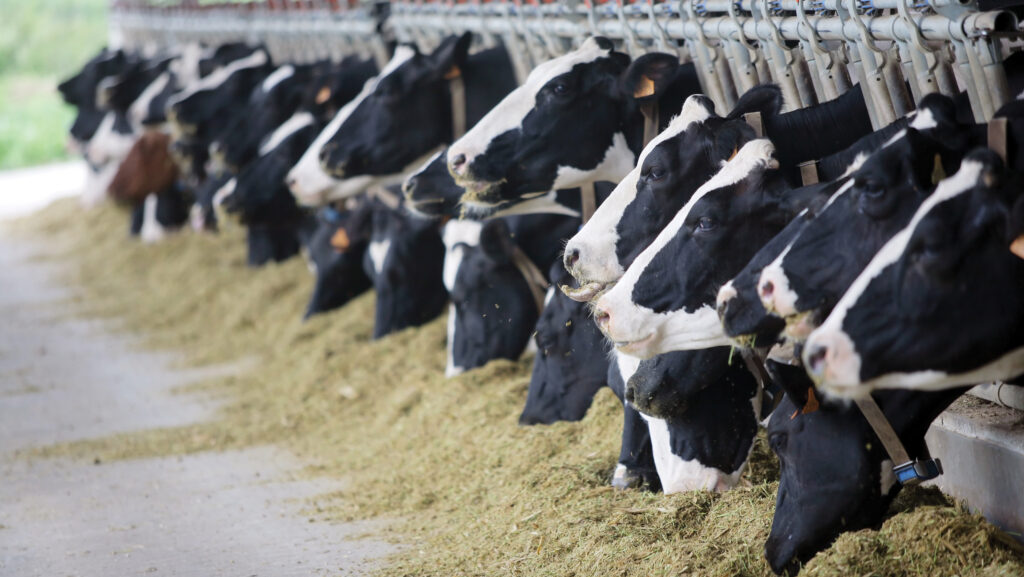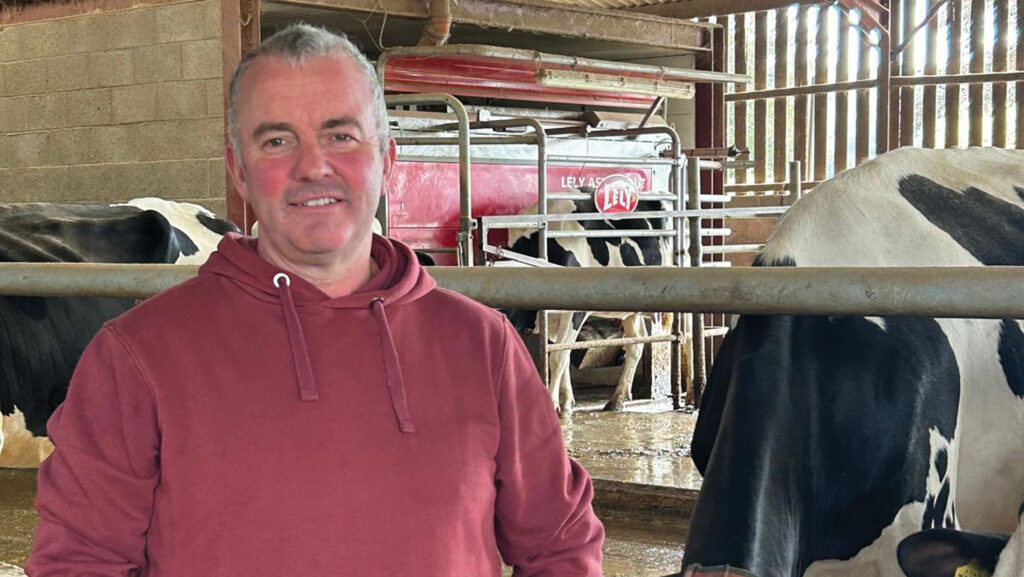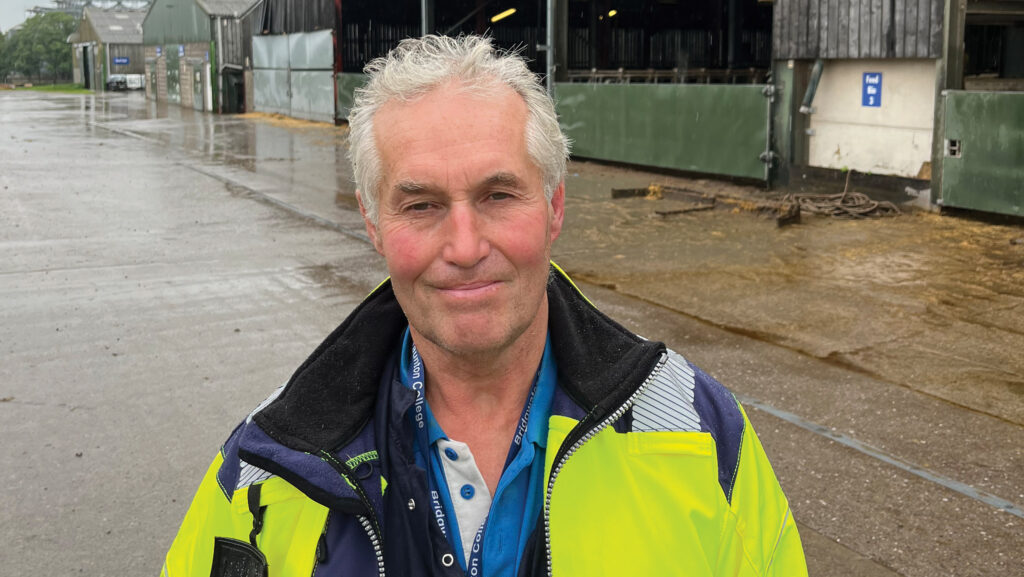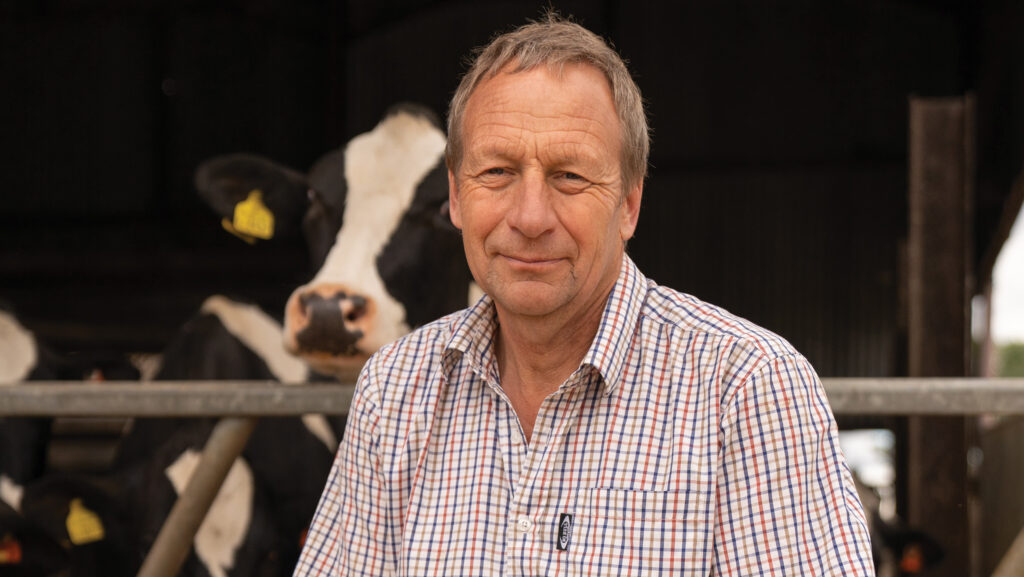How three dairy farmers maintain high-yielding herds
 © Adobe Stock
© Adobe Stock What is the secret to achieving high yields of more than 10,000 litres a cow a year?
Asked how they maintain high levels of production in their dairy enterprises, three farmers put their success down to different factors.
One has a grazing herd milked by robots, another manages a housed herd on an agricultural college farm and a third runs three-times-a-day milking.
They set out what they regard as the most important in producing consistently high yields.
See also: How high-yielding dairy cut soya and lowered crude protein
Russell Morgan, Graig Olway, Monmouthshire

Russell Morgan © Sarah Smith
Farm facts: Graig Olway, Monmouthshire
- 283ha family farm growing grass, maize, wheat and barley
- 300-cow Llangeview pedigree Holstein herd
- Yielding about 11,000 litres a cow a year at 3.9% fat and 3.35% protein
- Milked through six robots
- Averaging 3.2 robot visits a cow a day
- Supplying Muller on an aligned contract
- Cows graze
Herd health is “by far the number one” when it comes to achieving high levels of production for Monmouthshire producer Russell Morgan.
His team, with support from vets and farm advisers, has worked hard to improve herd health, with lameness falling from about 40% in 2020 to single digits in 2024.
Russell believes good foot health translates into good production.
“It helps everything if the cow can get up and walk around. They can visit the robot more, eat more and express their natural behaviour,” he explains.
Picking up early signs of lameness through fortnightly scoring has been key to success, together with top levels of cow comfort.
Any problem cows will be trimmed or treated within two days of scoring, preventing problems from escalating.
Bovine viral diarrhoea has also been eliminated, and cows are vaccinated for leptospirosis.
This has helped youngstock health, which Russell views as essential in securing lifetime performance.
With that in mind, calf milk feeding rates have recently been increased to 1,200g of calf milk replacer a day, with the aim of increasing body weight when calving-in at 23-24 months.
This should translate into stronger yields.
First-lactation heifers are managed in a separate, low-stocked group and milked through two robots.
This minimises group changes and bullying from older cows and will ultimately benefit production, he says.
Cows are also provided with plenty of space and 10-15% extra cubicles.
Stocking at 52 cows a robot appears to be the “sweet spot”: as well as robot visits, this allows enough free time in the robot and allows the less dominant cows to access it.
Herd expansion using home-bred heifers means a large proportion of the herd is currently heifers.
Previously yielding 12,000 litres a cow a year, the aim is to get back to this level.
George Stickley, Rodway Farm, Cannington, Somerset

George Stickley © Ben Carey
Farm facts: Rodway Farm, Cannington, Somerset
- 170ha maize, wholecrop wheat and barley, and grass
- 230 Holsteins housed and calving all year round
- Yielding 10,640 litres a cow a year at 4.2% fat and 3.47% protein
- Milked twice a day through a 24:24 parlour
- Supplying Muller, Tesco
- Sexed semen and beef breeding strategy using British Blue and Aberdeen Angus bulls
- 200 crossbred Mule ewes
George Stickley is farm manager for Rodway Farm, the Bridgwater and Taunton College farm.
It is the little things that all add up to mean cows produce more than 10,500 litres a cow a year on twice-a-day milking, he says.
He believes this starts with the basics of producing consistently high-quality forage to support rumen health and fertility.
The aim is to take four to five grass silage cuts a year, with two people working on the clamp to roll and push up. A good additive is used, along with side sheets and a cling film sheet.
Good engagement with contractors is fundamental, he says.
George believes a consistent routine with the cows is also a must.
“My theory is, the more they’re looked after in the cubicles, the more they look after you,” he explains.
“It’s attention to detail and trying to improve their conditions. The happier the cow, the more they eat and drink and relax and cud.”
Cubicles are cleaned off and topped up with chopped straw and a sanitiser powder twice daily. LED lights automatically come on between 4am and 10pm, followed by dimmer lights overnight.
Ceiling fans also operate when temperatures go above 5C.
George reflects: “Installing the fans and the lights increased it [milk] about a litre a cow a day.”
In the parlour, routine is focused around providing 60-90 seconds between initial contact and cupping-on to optimise milk let-down. This is achieved by working on half a row at a time.
George is also keen to highlight the value of a good nutritionist and vet and feeding a well-balanced diet with good-quality forage and chopped straw.
He thinks routine silage analysis is an essential tool to ensure the diet is optimised to get the most from forage.
Robert Mallett, Northleaze Farm, Swindon, Wiltshire

Robert Mallett © Tom Askew-Miller
Farm facts: Northleaze Farm, Swindon, Wiltshire
- 173ha farmed
- 230 cows calving from 20 August to Christmas
- Yielding 11,700 litres a cow a year at 3.85% fat and 3.23% protein
- Milked three times a day, supplying Freshways
- Sexed semen and beef strategy with British Blue bulls on cows and Aberdeen Angus on heifers
- Beef calves reared on-farm and finished at 14 months
A well-bred herd selected for yield, health and longevity is the number one factor driving production at Northleaze Farm, Swindon where the 230-cow herd yields 11,700 litres a cow a year.
Robert Mallett (Farmers Weekly Dairy Farmer of the Year 2020) selects mainly for profitable lifetime index (PLI), saying it delivers the right balance between milk, health, fertility, efficiency and longevity.
Cows last 4.8 lactations on average, up nearly one lactation as a result of breeding.
He selects from the top 20 PLI genomic young sires and breeds from the best PLI cows using parent average, ruling out anything that is low on milk.
This means heifers are in the top 1% and cows in the top 5% for PLI.
Robert, who farms with his son, David, says analysis has shown the actual value of breeding for milk is far higher than predicted.
“For example, analysis by Genus shows for each 100kg of predicted transmitting ability of milk, we are getting 148kg of actual yield,” he says.
Ensuring a smooth transition also sets cows up for a productive lactation, with Robert happy to “pay a premium” for easy-calving, fast-growing British Blue bulls.
“The worst thing you can do with a cow is give her a difficult calving and mess her up,” he says.
A partial dietary cation anion balance ration is fed in the two to three weeks prior to calving, with the aim of acidifying the blood.
This ensures cows are better able to use calcium from their bones, avoiding milk fever.
Urine pHs are routinely monitored and the level of anionic salts changed accordingly. There has been one milk fever in the past 12 months.
Robert believes good dry matter intakes support production and immunity.
Smart ear tags are used to track individual cow rumination and eating times, which give an early warning when a cow is getting sick so the issue can be addressed before it escalates.
Calves only receive colostrum with a Brix refractometer reading of more than 22% at their first colostrum feed.
They are then fed 1,200g of calf milk replacer a day. “Better growth translates into better production in lactation,” he explains.
